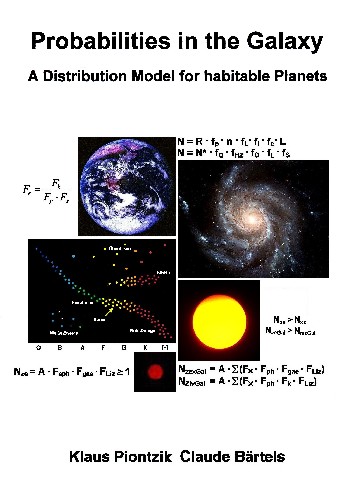As the transformation shows
overall, the Seager equation, after adaptation to
sun-like stars, can be regarded as equivalent to the
Special Basic Model 6.3. For this to be exactly the
case, both equations must be equivalent to each other.
It must then apply:
If Fgae = Fg
· Fa · Fe is used according to
definition 3.1.3, then an assessment can be made for Fe.
It turns out:
converting the equation to Fe:
Substituting the values in Equation
11.1.1 yields: |

|
176 sides, of them 64 in Color 76 pictures 11 tables Production and publishing: Books on Demand GmbH, Norderstedt ISBN 9-783-7528-5524-1 Price: 22 Euro |
|